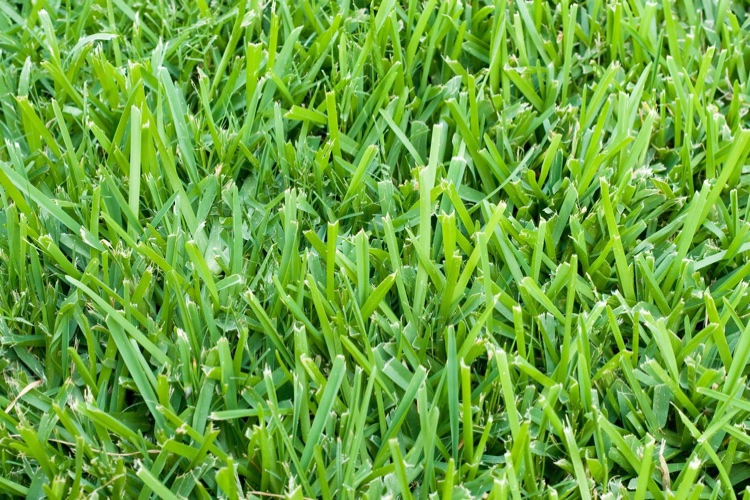The most successful and therefore most common grass types for north Texas are…
Zoysia – St. Augustine – Bermuda
Top 3 Grass Types
Zoysia Grass

Zoysia grass is available for sod install in three different types: Palisades, Emerald, and Zeon. Both Palisades and Emerald are drought tolerant. However, Palisades fares better in shade, while Emerald is hardier in excessive heat.
Zeon grass offers a finer, softer blade, making it a comfy ground cover for families who want to feel the grass between their toes. It creates minimal thatch, and is moderately tolerant to heat, drought, and shade.
This grass is considered a perennial plant, giving it a long life through the spring and fall seasons. It does best with three fertilizer applications throughout the spring and summer. However, you want to bear in mind that extreme heat does not mix well with fertilizer chemicals.
Zoysia grass is notably dense, which makes it soft and weed resistant. However, you’ll want to talk to your local lawn care specialist about the occasional need to aerate your soil.
St. Augustine Grass

The two most popular types of St. Augustine are Palmetto and Raleigh. Both are hardy in hot and cold temperatures, but Raleigh tends to be a bit more shade tolerant. Meanwhile, some prefer Palmetto due to the fact that it’s less likely to get thatchy.
St. Augustine needs a bit more watering than the other two grass types. It’s important to remember that watering deeply is more effective than watering frequently. Be sure to irrigate your lawn in the early or later parts of the day during the summer, to avoid evaporation.
RELATED TIP: Lawn & Garden Watering Guidelines
About an inch to 1.5 inches per week should be efficient for your St. Augustine grass. If it isn’t getting enough water, you will know by the blades beginning to turn yellow.
St. Augustine does well with a quality weed-and-feed product in early spring. However, sometimes only a fertilizer is necessary. As with all grasses, it’s good to get your soil tested once in a while to balance out the nutrients. Most North Texas grasses thrive on nitrogen-rich fertilizers.
Bermuda Grass

Celebration, Tiftuf, Tifway 419, and Common Bermuda. Both Tiftuf and Tifway 419 are known for their durability both in sun and shade, hot and cold. They can take a lot of foot traffic, but Tiftuf tends to green up faster, while Tifway 419 is hardier for large areas such as golf courses.
Common Bermuda grass is a longstanding favorite, known for its adaptability to varying climates, weather patterns, and soil types. It’s widely used in both commercial and residential lawns.
Celebration Bermuda requires less mowing than typical bermuda varieties and has tough runners, rhizomes, and deep roots that provide excellent sod strength, wearability, and improved drought tolerance.
Bermuda grasses need about an inch of water per week during active growth. As a low-growing grass, some have found that using a reel mower is actually more effective than an electric or gas-powered mower. It needs to be kept at 1-1.5 inches in height, and reel mowers are less likely to scalp your lawn.
Conclusion
All three of these are excellent choices as top grass types for north Texas region. Depending on your yard’s soil and shade type, it is best to know which one will thrive in your yard.
- Zoysia strikes a “happy medium” with regards to both mowing and watering. It’s a dense and hardy turf with broad blades.
- St. Augustine grass does well in the shade and can endure heavy foot traffic, but it requires the most amount of water.
- Bermuda grass requires the least amount of watering and fertilizer, and it does well in extended sunlight. It offers a finer, softer blade while still providing a dense ground cover.
RELATED TIP: 8 Best Fall Annual Flowers for North Texas
If you aren’t sure which grass type is right for you, please reach out to us for assistance.


Comments (0)
Thanks for your comment!
Thanks for your feedback! Your comments have been successfully submitted! Please note, all comments require admin approval prior to display.
Error submitting comment!
There is a problem with your comment, please see below and try again.